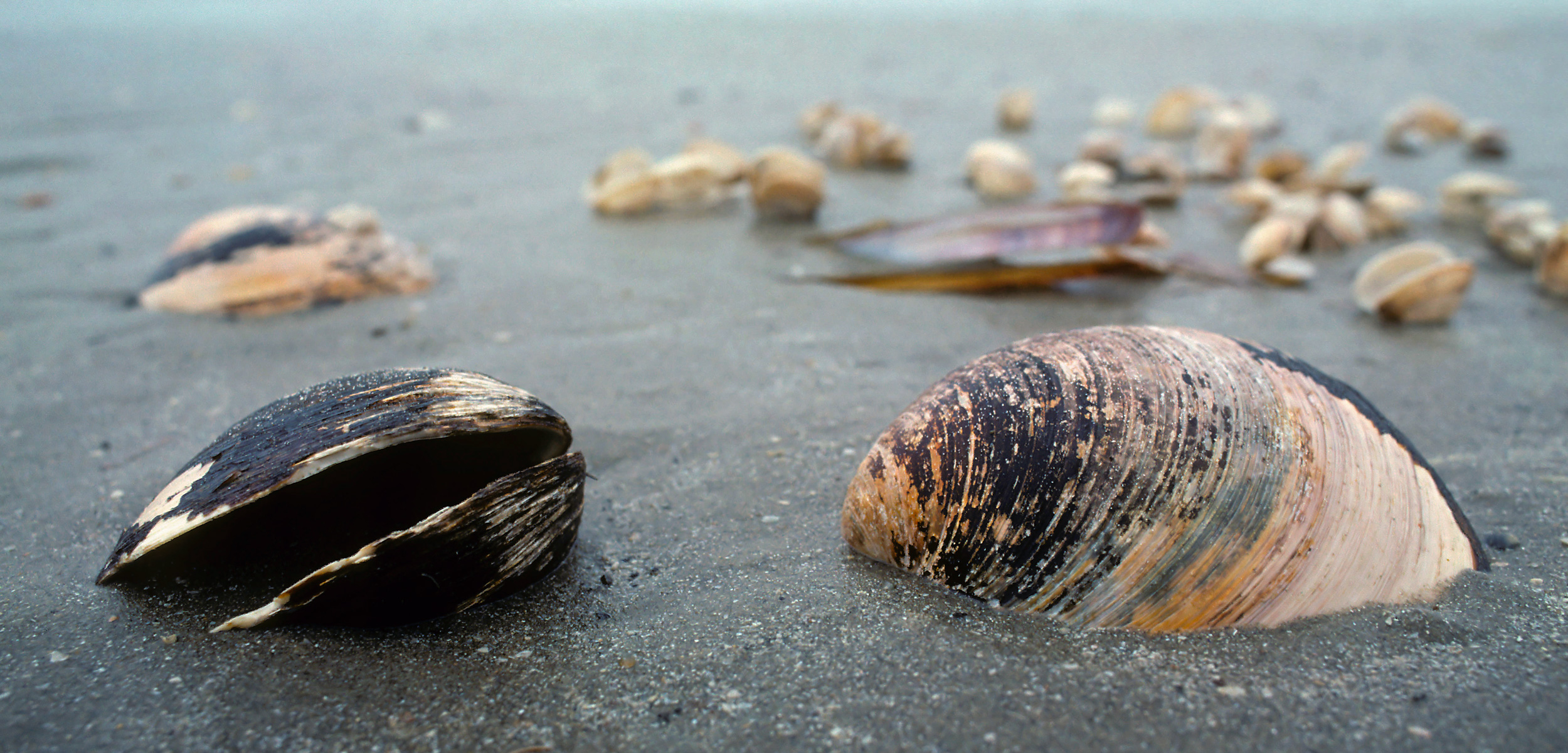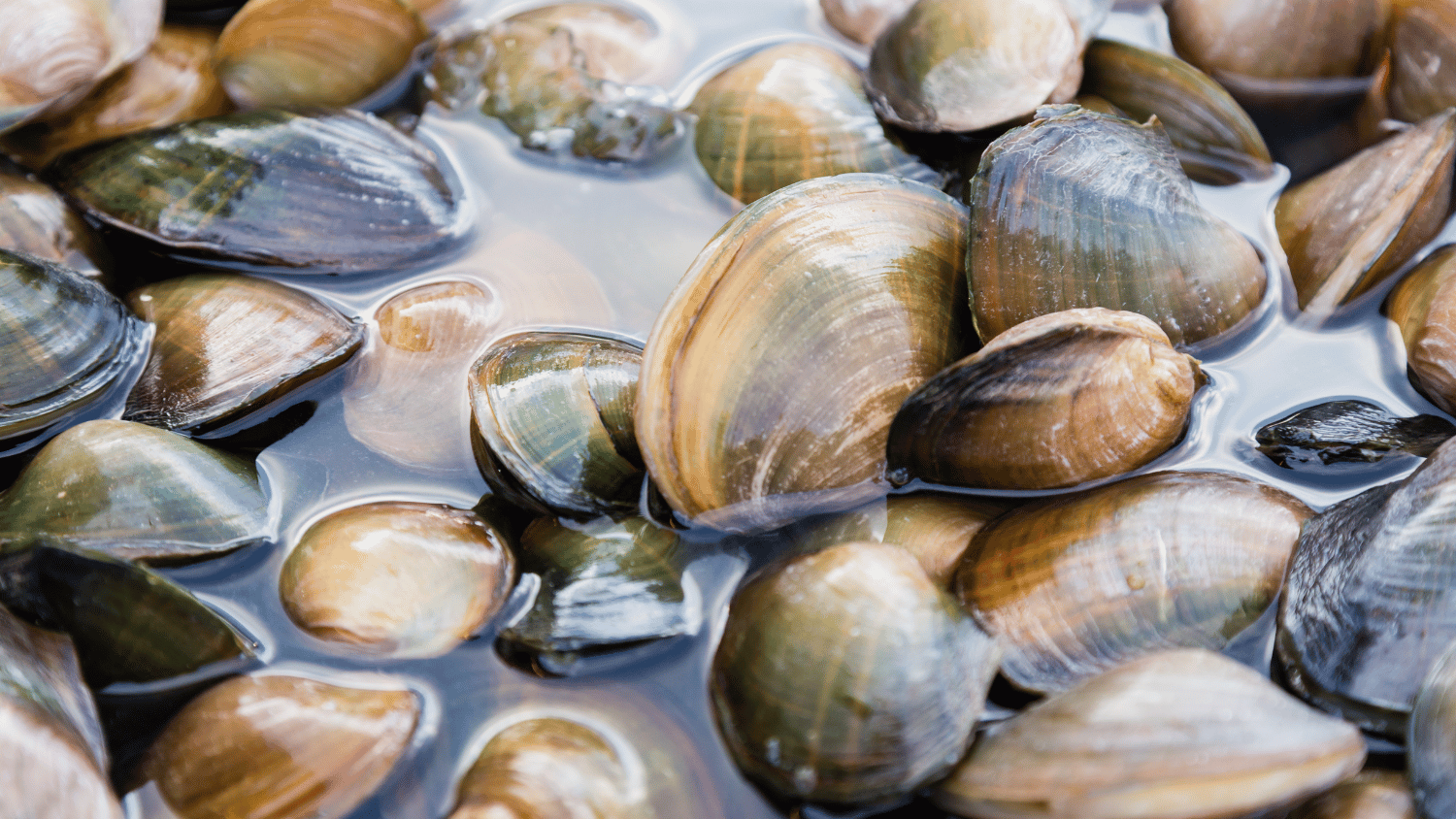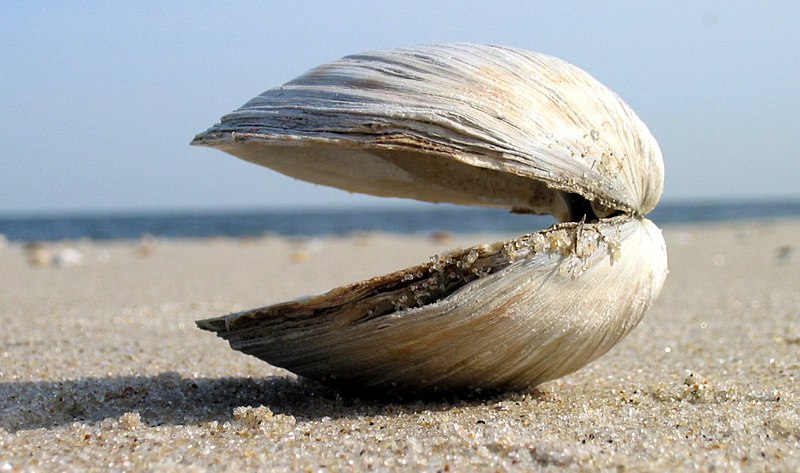Sea clams are fascinating marine creatures. They live in oceans worldwide.
These mollusks play a crucial role in the ecosystem. They filter water, providing cleaner habitats for other species. Understanding sea clams is important for marine conservation. Sea clams, with their unique characteristics, have intrigued humans for centuries. These bivalve mollusks are not only vital for ocean health but also hold culinary significance.
From their role in water filtration to their importance in maintaining marine biodiversity, sea clams contribute significantly to our environment. Moreover, they are a popular delicacy in many coastal cuisines, prized for their tender and flavorful meat. Whether you are a marine enthusiast or a food lover, delving into the world of sea clams can be both enlightening and rewarding.

Credit: hakaimagazine.com
Introduction To Sea Clams
Sea clams are fascinating creatures that play a vital role in marine ecosystems. They have unique characteristics and contribute to the health of our oceans. Let’s dive deeper into understanding sea clams and their importance.
What Are Sea Clams?
Sea clams are bivalve mollusks found in saltwater environments. They have two shells connected by a hinge. Clams live buried in sand or mud and can be found in various ocean depths.
There are several species of sea clams, each with distinct features. Some common types include the Atlantic surf clam and the Pacific razor clam. These clams vary in size, shape, and habitat.
| Species | Size | Habitat |
|---|---|---|
| Atlantic Surf Clam | Up to 8 inches | Atlantic Ocean |
| Pacific Razor Clam | Up to 6 inches | Pacific Ocean |
Importance In Marine Ecosystems
Sea clams play a crucial role in marine ecosystems. They act as natural filters, cleaning the water by removing plankton and other particles. This helps maintain water clarity and quality.
Clams also provide food for many marine animals. Fish, birds, and crabs rely on clams as a food source. By being part of the food chain, clams help sustain the biodiversity of marine life.
Additionally, clams contribute to the ocean floor’s stability. Their burrowing activities aerate the sediment, promoting healthy seabed conditions. This enhances the habitat for other marine organisms.
- Act as natural filters
- Provide food for marine animals
- Contribute to ocean floor stability
Understanding the role of sea clams helps us appreciate their importance. Protecting these creatures ensures the health of our marine ecosystems.
Types Of Sea Clams
Sea clams are fascinating creatures found in oceans around the world. They come in many shapes and sizes, each with unique characteristics. In this section, we will explore the different types of sea clams, from the common varieties to the rare and exotic species.
Common Varieties
There are several common varieties of sea clams that many people recognize. These clams are often found in seafood markets and on restaurant menus.
- Atlantic Surf Clam: Large, meaty clams found along the East Coast of the United States.
- Soft-shell Clam: Also known as “steamers,” these clams have a thin, brittle shell.
- Razor Clam: Named for their long, thin shape, resembling a straight razor.
- Quahog: Hard-shelled clams, often used in clam chowder and stuffed clams.
Rare And Exotic Species
Some sea clams are less common and are considered rare or exotic. These species are often found in specific regions and are prized for their unique flavors and textures.
- Geoduck: A large, burrowing clam native to the Pacific Northwest, known for its long siphon.
- Giant Clam: Found in tropical waters, these clams can weigh up to 500 pounds.
- Manila Clam: Small, sweet clams native to the western Pacific, often found in Asian cuisine.
- Vongole: Small, tender clams popular in Italian dishes like pasta alle vongole.
| Clam Type | Characteristics | Common Uses |
|---|---|---|
| Atlantic Surf Clam | Large, meaty | Chowder, fried clams |
| Soft-shell Clam | Thin, brittle shell | Steamed, fried |
| Razor Clam | Long, thin shape | Grilled, sautéed |
| Quahog | Hard shell | Stuffed, chowder |
| Geoduck | Large, long siphon | Sashimi, grilled |
| Giant Clam | Can weigh up to 500 pounds | Decorative, occasional consumption |
| Manila Clam | Small, sweet | Soups, stir-fry |
| Vongole | Small, tender | Pasta dishes |
Habitat And Distribution
Sea clams are fascinating marine creatures that thrive in diverse environments across the globe. Understanding their habitat and distribution is crucial for appreciating their role in marine ecosystems. Let’s delve into where these unique mollusks live and how widely they are spread.
Preferred Environments
Sea clams prefer habitats where they can burrow and find food easily. They thrive in sandy and muddy ocean floors. These environments provide the necessary nutrients and protection. Clams often live in intertidal zones, where the tide meets the land. Some species also inhabit deeper waters, extending to the continental shelf.
These habitats offer a rich supply of plankton and other organic matter. Clams filter-feed, drawing in water to extract food particles. Hence, they are found in areas with good water circulation.
Global Distribution
Sea clams are distributed globally, from cold arctic waters to warm tropical seas. They adapt well to various marine environments, which explains their wide distribution.
The following table summarizes the global distribution of sea clams:
| Region | Common Species |
|---|---|
| North America | Atlantic Surf Clam, Softshell Clam |
| Europe | Common Cockle, Razor Clam |
| Asia | Japanese Clam, Manila Clam |
| Australia | Pipi, Sydney Cockle |
| South America | Southern Surf Clam, Chilean Clam |
In summary, sea clams inhabit a variety of environments and are found worldwide. Their adaptability allows them to thrive in different marine conditions, making them a key part of ocean biodiversity.
Life Cycle Of Sea Clams
Sea clams are fascinating creatures. Their life cycle is a series of intriguing stages. From reproduction to adulthood, each stage is crucial. Understanding their life cycle helps us appreciate these marine animals more.
Reproduction Process
The reproduction process of sea clams is unique. Most species are broadcast spawners. This means they release eggs and sperm into the water. Fertilization occurs externally. Timing is important. Many clams spawn during specific seasons. This increases the chances of fertilization.
Spawning is often synchronized with environmental cues. These cues include water temperature and moon phases. After fertilization, the eggs develop into larvae. This stage is called the planktonic stage. The larvae float in the water and are carried by currents.
Growth Stages
Sea clams go through several growth stages. Each stage is vital for their development. Here is a table summarizing the key stages:
| Stage | Description |
|---|---|
| Larval Stage | Larvae float in the water. They are planktonic. This stage lasts for several weeks. |
| Settlement | Larvae settle on the sea floor. They start to develop a shell. |
| Juvenile Stage | Clams grow and their shells harden. They become less vulnerable to predators. |
| Adult Stage | Clams are fully grown. They reach sexual maturity and can reproduce. |
During the larval stage, clams are vulnerable. They face threats from predators and harsh conditions. Once they settle, they begin to develop their shells. This is a critical stage. Developing a hard shell protects them from predators.
In the juvenile stage, clams continue to grow. Their shells harden further. They become more resilient. Finally, in the adult stage, clams reach full size. They can reproduce and start the cycle again.
The life cycle of sea clams is a testament to the resilience of nature. Each stage is a step towards survival and reproduction. Understanding these stages helps us protect these important marine creatures.
Role In The Food Chain
Sea clams play a vital role in the ocean’s food chain. These bivalve mollusks serve as both predators and prey, supporting various marine species. Their presence ensures the health and balance of marine ecosystems.
Predators And Prey
Sea clams are a crucial part of the diet for many ocean creatures. They are preyed upon by starfish, crabs, and fish. Birds, such as seagulls and shorebirds, also feed on them. Furthermore, humans harvest clams for culinary uses.
Clams themselves are filter feeders. They consume plankton and organic particles from the water. This feeding behavior helps clean and purify the water, promoting a healthier environment for other sea life.
Nutritional Value
Sea clams are rich in nutrients. They are a good source of protein, vitamins, and minerals. Eating clams can provide essential nutrients such as:
- Protein: Helps build and repair tissues.
- Vitamin B12: Supports nerve function and energy production.
- Iron: Vital for blood health and oxygen transport.
- Omega-3 fatty acids: Promote heart health.
Clams are low in fat and high in essential nutrients. This makes them a healthy addition to any diet.

Credit: www.seaforager.com
Economic Significance
Sea clams play a vital role in the economy. They are a valuable resource for both commercial harvesting and aquaculture practices. The industry supports thousands of jobs and contributes significantly to coastal economies.
Commercial Harvesting
Commercial harvesting of sea clams is a major industry. Harvesters use specialized equipment to collect clams from the ocean floor. This method ensures a steady supply to meet market demand.
Here is a table illustrating some key statistics:
| Year | Clam Production (Tons) | Revenue (Millions) |
|---|---|---|
| 2020 | 500,000 | 1.2 |
| 2021 | 520,000 | 1.3 |
| 2022 | 540,000 | 1.4 |
Aquaculture Practices
Aquaculture is the farming of sea clams in controlled environments. This practice helps ensure sustainable clam populations.
Benefits of aquaculture include:
- Reduced pressure on wild clam populations
- Consistent supply of clams year-round
- Enhanced quality control
These benefits make aquaculture an essential part of the clam industry. It provides a reliable source of income for many coastal communities.
Conservation Efforts
Sea clams play a vital role in marine ecosystems. They filter water and provide habitat for other species. Conservation efforts are essential to protect these valuable creatures. This section will cover the threats they face and the measures taken to protect them.
Threats To Sea Clams
Sea clams face many threats. Overfishing is a major issue. Fishermen often catch clams faster than they can reproduce. This reduces their numbers significantly. Another threat is pollution. Chemicals and waste in the water harm clams. Habitat destruction is also a problem. Coastal development and dredging destroy the areas where clams live. Climate change affects sea clams too. Rising temperatures and ocean acidification disrupt their survival.
Protection Measures
Several measures are in place to protect sea clams. One key method is regulating fishing. Fishing limits and seasons help control overfishing. Marine protected areas (MPAs) are also established. These areas restrict human activities, allowing clams to thrive. Pollution control is another important measure. Reducing chemical runoff and waste helps maintain clean water for clams. Restoring habitats is crucial as well. Efforts to rebuild coastal areas support clam populations. Climate action is essential. Reducing greenhouse gas emissions helps combat climate change, benefiting sea clams.
| Threat | Protection Measure |
|---|---|
| Overfishing | Fishing limits and seasons |
| Pollution | Pollution control |
| Habitat destruction | Restoring habitats |
| Climate change | Climate action |
Conservation efforts are vital for sea clams. Protecting these species ensures the health of marine ecosystems. By understanding threats and implementing protection measures, we can help preserve sea clams for future generations.

Credit: cals.ncsu.edu
Interesting Facts
Sea clams are fascinating creatures with a rich history. They have played significant roles in various cultures and ecosystems. Here are some interesting facts about these marine mollusks.
Historical Uses
Throughout history, sea clams have served many purposes:
- Food Source: Clams have been a staple in diets across the world.
- Currency: Some cultures used clam shells as a form of money.
- Tools and Jewelry: Indigenous peoples crafted tools and jewelry from clam shells.
Cultural Significance
Sea clams hold cultural importance in many communities:
- Native American Tribes: Clams were central to many Native American diets and traditions.
- Asian Cuisine: Clams are a delicacy in many Asian dishes, symbolizing prosperity.
- European Folklore: Clams appear in various European myths and legends.
| Region | Use |
|---|---|
| North America | Food, Tools, Jewelry |
| Asia | Delicacy, Symbol of Prosperity |
| Europe | Folklore, Myths |
These fascinating facts highlight the importance of sea clams. They are more than just seafood. They are part of our history and culture.
Frequently Asked Questions
What Are Sea Clams?
Sea clams are marine bivalve mollusks found in oceans worldwide. They have two shells and are commonly harvested for food.
How Do Sea Clams Reproduce?
Sea clams reproduce by releasing eggs and sperm into the water. Fertilization occurs externally, and larvae develop in the ocean.
Where Do Sea Clams Live?
Sea clams live in sandy or muddy ocean floors. They burrow into the substrate for protection and feeding.
What Do Sea Clams Eat?
Sea clams are filter feeders. They consume plankton and other small particles suspended in the water.
Conclusion
Sea clams offer a fascinating glimpse into marine life. Their diverse species captivate both scientists and seafood lovers. Exploring their habitats reveals the ocean’s mysteries. Cooking clams provides delicious meals, full of nutrients. Remember to source clams sustainably to protect marine ecosystems.
Whether you’re eating or studying them, sea clams enrich our lives. Dive into their world and discover the beauty beneath the waves. Enjoy the journey with these incredible creatures.




